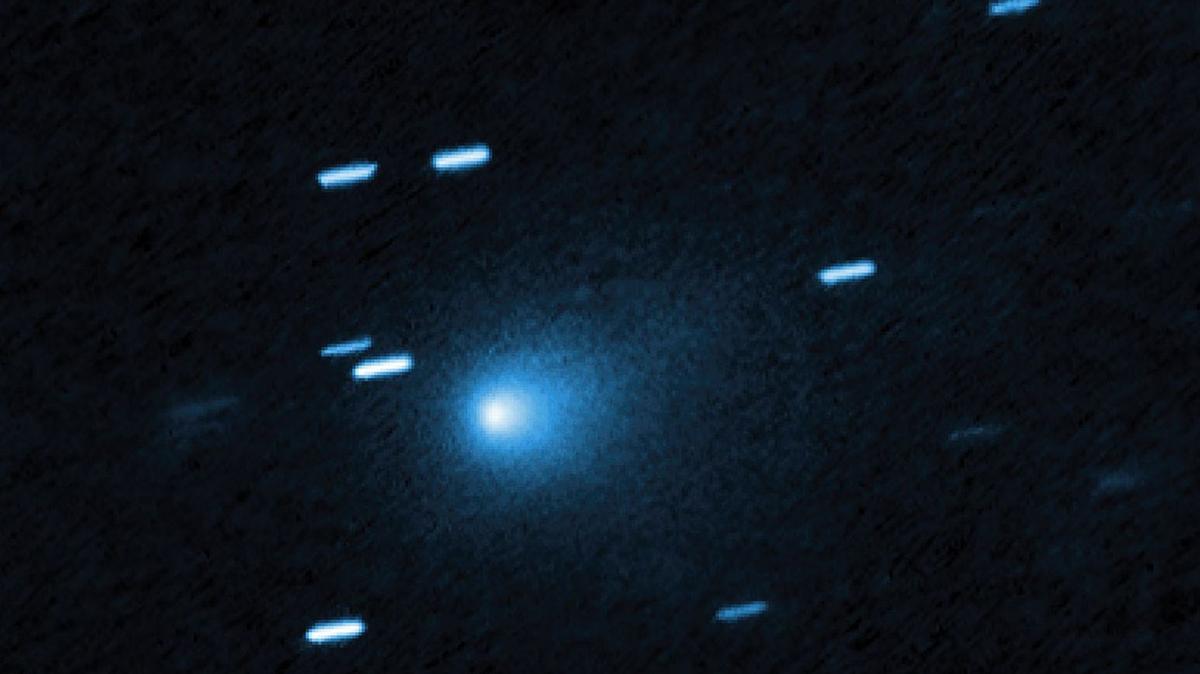In what astronomers are calling a landmark finding, NASA scientists have confirmed the presence of water’s chemical signature on the interstellar comet 3I/ATLAS – a discovery that could transform our understanding of how comets evolve and whether distant worlds might harbour the building blocks of life.
A visitor from beyond the solar system
The comet, officially named 3I/ATLAS, was first spotted on July 1, 2025, by the Asteroid Terrestrial-impact Last Alert System (ATLAS) in Hawaii. It is only the third known interstellar object ever identified, following 1I/‘Oumuamua in 2017 and 2I/Borisov in 2019.
Unlike most comets that orbit the Sun, 3I/ATLAS is on a hyperbolic path, meaning it entered the Solar System from another star and will soon leave it forever. Astronomers estimate that it is about seven billion years old – nearly twice the age of Earth – making it possibly the oldest comet ever observed. Because of its age and alien origin, it has become a prime focus for researchers hoping to glimpse the chemical legacy of another planetary system before it disappears into deep space.
NASA detects the signature of water
The major finding came from NASA’s Neil Gehrels Swift Observatory, operated in collaboration with Auburn University in Alabama, which detected a faint ultraviolet glow from the comet. This emission was caused by hydroxyl (OH) gas, which forms when sunlight breaks apart water molecules, according to Sky at Night magazine.
The ultraviolet light, undetectable from ground-based telescopes, was captured by Swift’s space-based instruments – confirming the first clear chemical evidence of water activity on an interstellar comet at such a vast distance from the Sun.
According to lead researcher Dr Zexi Xing, “Every interstellar comet so far has been a surprise.”
The study’s findings, recently published, are expected to reshape existing models of how comets and planetary systems form and evolve throughout the Galaxy.
Why the discovery matters
Detecting even an indirect sign of water on 3I/ATLAS is crucial, as it indicates that planet-forming systems beyond our Sun could share similar chemical compositions.
“Each interstellar comet we’ve observed has rewritten the rules,” said Prof Dennis Bodewits, co-author of the study. “‘Oumuamua was dry, Borisov was carbon monoxide-rich, and now ATLAS is revealing water in conditions where we didn’t expect it.”
Water plays a central role not only in sustaining life but also in shaping the early formation of planets. When dust and ice combine around a young star, they form the raw materials for planetary systems. Detecting hydroxyl gas nearly three times farther from the Sun than Earth suggests that some interstellar comets preserve water ice from ancient star systems, possibly older than our own.
Unusual activity at the edge of the solar system
Researchers also found that 3I/ATLAS was losing water at a rate of roughly 40 kilograms per second, even though it was too far from the Sun for its ice to normally vaporise.
This implies that small icy grains could be breaking away from the comet’s surface and warming up under sunlight, releasing the ultraviolet emissions observed by NASA.
“3I/ATLAS’s behaviour defies our models,” Bodewits said. “It indicates there are physical and chemical processes at play that we’re only beginning to understand.”
What it means for the search for life
Although the detection of hydroxyl gas does not directly prove the existence of extraterrestrial life, scientists say it strengthens the idea that organic chemistry is widespread across the Galaxy.
As Bodewits explained, “When we detect water or its fragments from an interstellar comet, we’re essentially reading a note from another planetary system. It tells us that the building blocks of life’s chemistry travel freely between stars.”
This finding highlights how interstellar comets serve as messengers, offering glimpses into how planetary systems form, evolve, and potentially sustain life.
3I/ATLAS has now faded from view but is expected to reappear after mid-November 2025, giving astronomers another opportunity to track its chemical activity as it moves closer to the Sun.
For now, NASA’s detection stands as a rare scientific milestone – a reminder that the chemical seeds of life may not be confined to Earth, but scattered throughout the stars.
Subscribe to our NewsletterGet Latest Mathrubhumi Updates in EnglishFollow
Disclaimer: Kindly avoid objectionable, derogatory, unlawful and lewd comments, while responding to reports. Such comments are punishable under cyber laws. Please keep away from personal attacks. The opinions expressed here are the personal opinions of readers and not that of Mathrubhumi.

